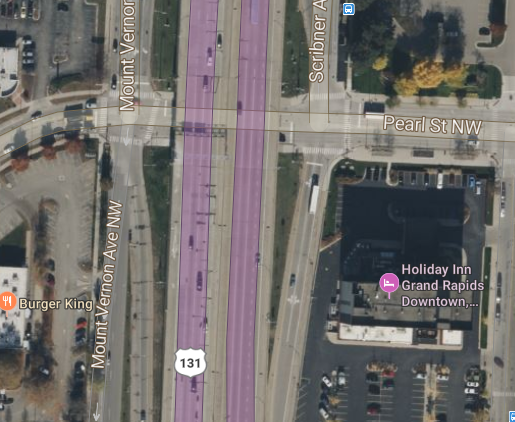Planning Agenda: 2024-03-28
The municipal agenda for the Planning Commission meeting on 2024-03-28 is 👉here👈
1639 Madison Ave SE
Something other than a Special Land Use request and a parking waiver! This is a request to rezone the subject property from its existing Traditional Business Area (TBA) and LDR (Low Density Residential; aka: Single Family) zoning to Special District Industrial/Transportation (SD-IT). The applicant - Gentex Corporation - is seeking to change and unify the properties zoning to the intended use of Industrial/Transportation.
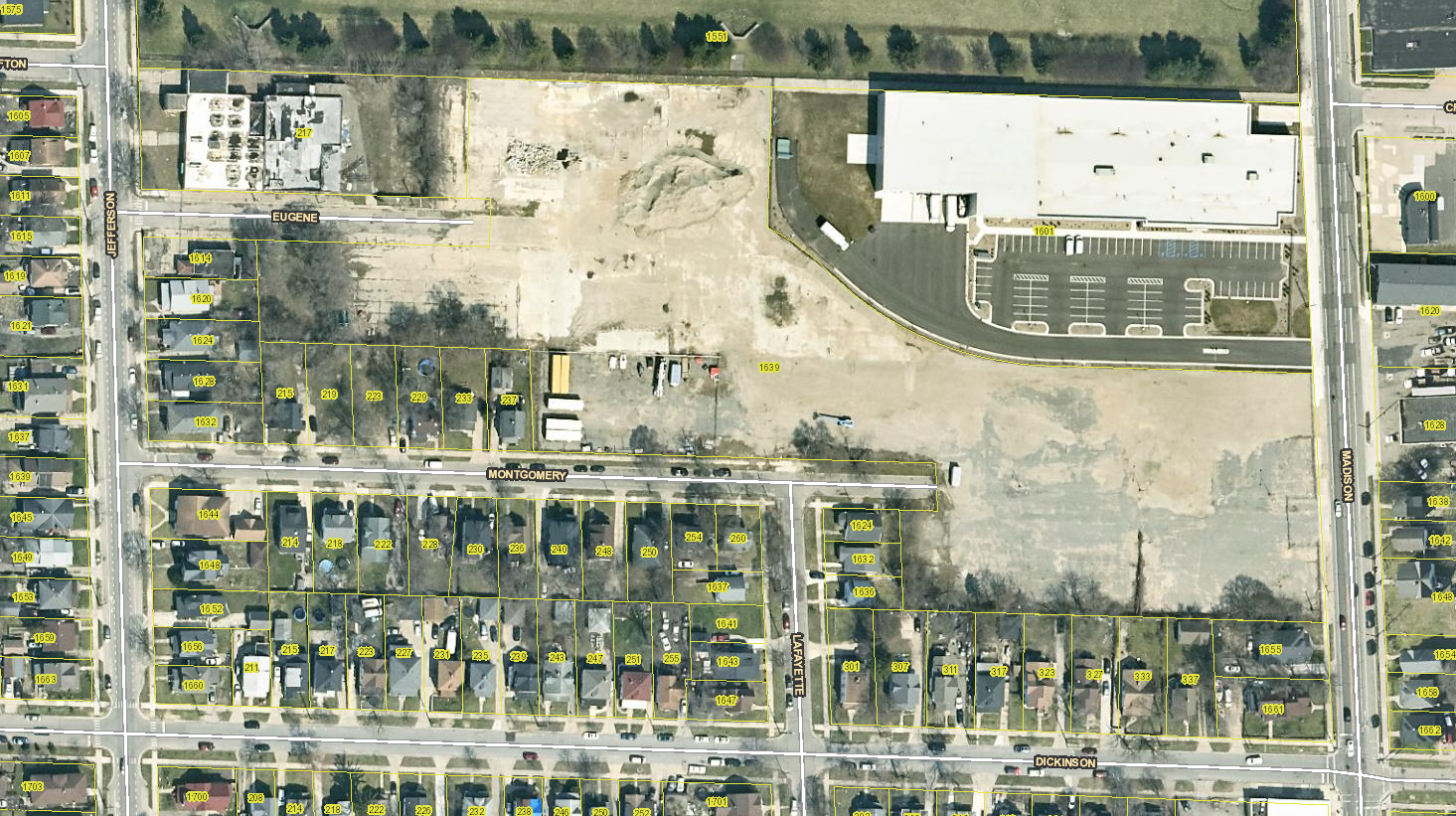
The property is bordered to the south by low density residential and to the north by industrial uses. The large green space visible immediately to the north is a drain field owned by Extrusions Division Inc, the property is not accessible to the public. Land use to the east, across Madison Ave is mixed. Land use to the west is principally residential.

230 Winter Ave NW (That Soccer Stadium)
You have, no doubt, heard about the Soccer Stadium project. A large-ish amenity development which has moved from concept to proposal at the speed of Hermes; it is impressive what our civic institutions can accomplish when they want to. 🤔 Imagine if this level of effort was dedicated, over the last eight years, to addressing the Housing Crisis? Especially, well, ... remember when interest rates were 3%? Anyway, back to the stadium.
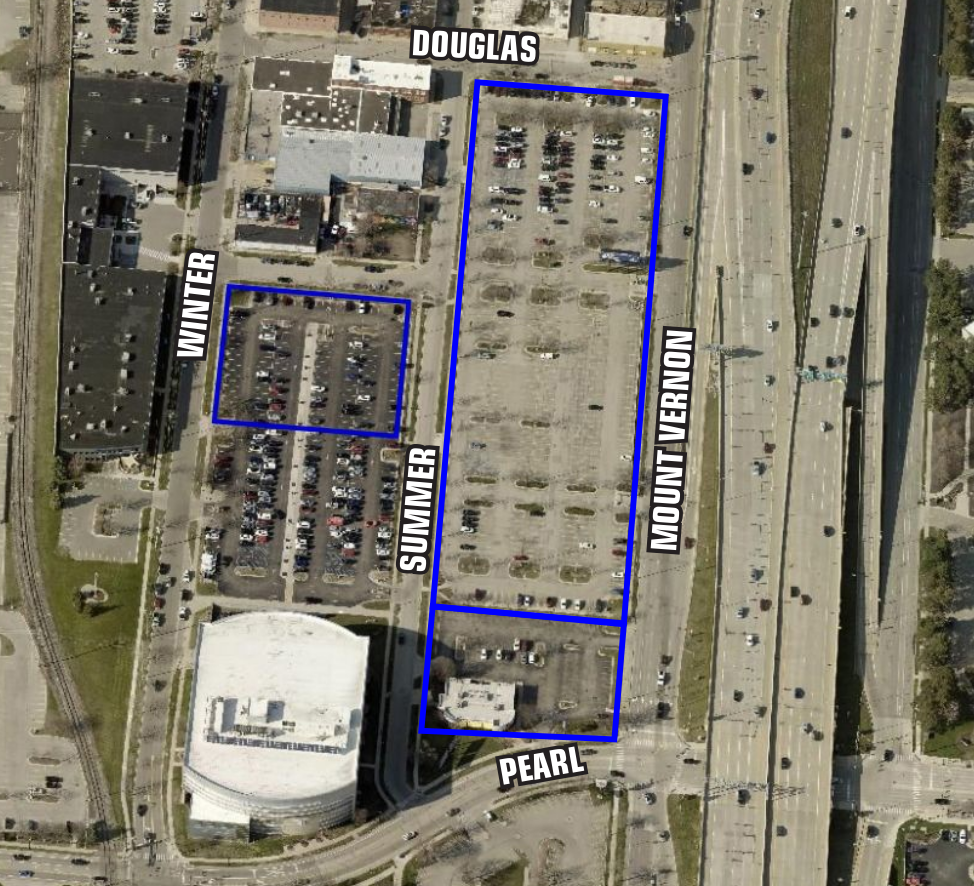 | |
West
 |
East
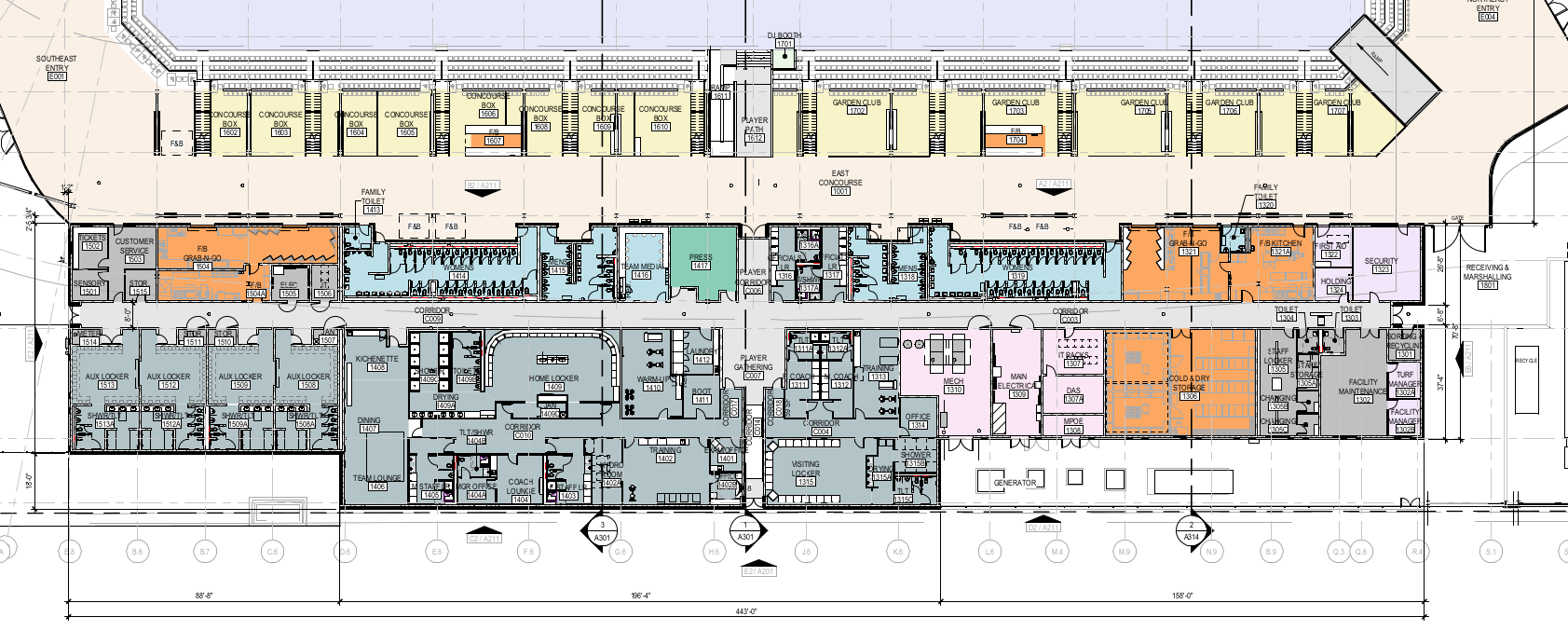 |
 |
 |
North
 |
Site
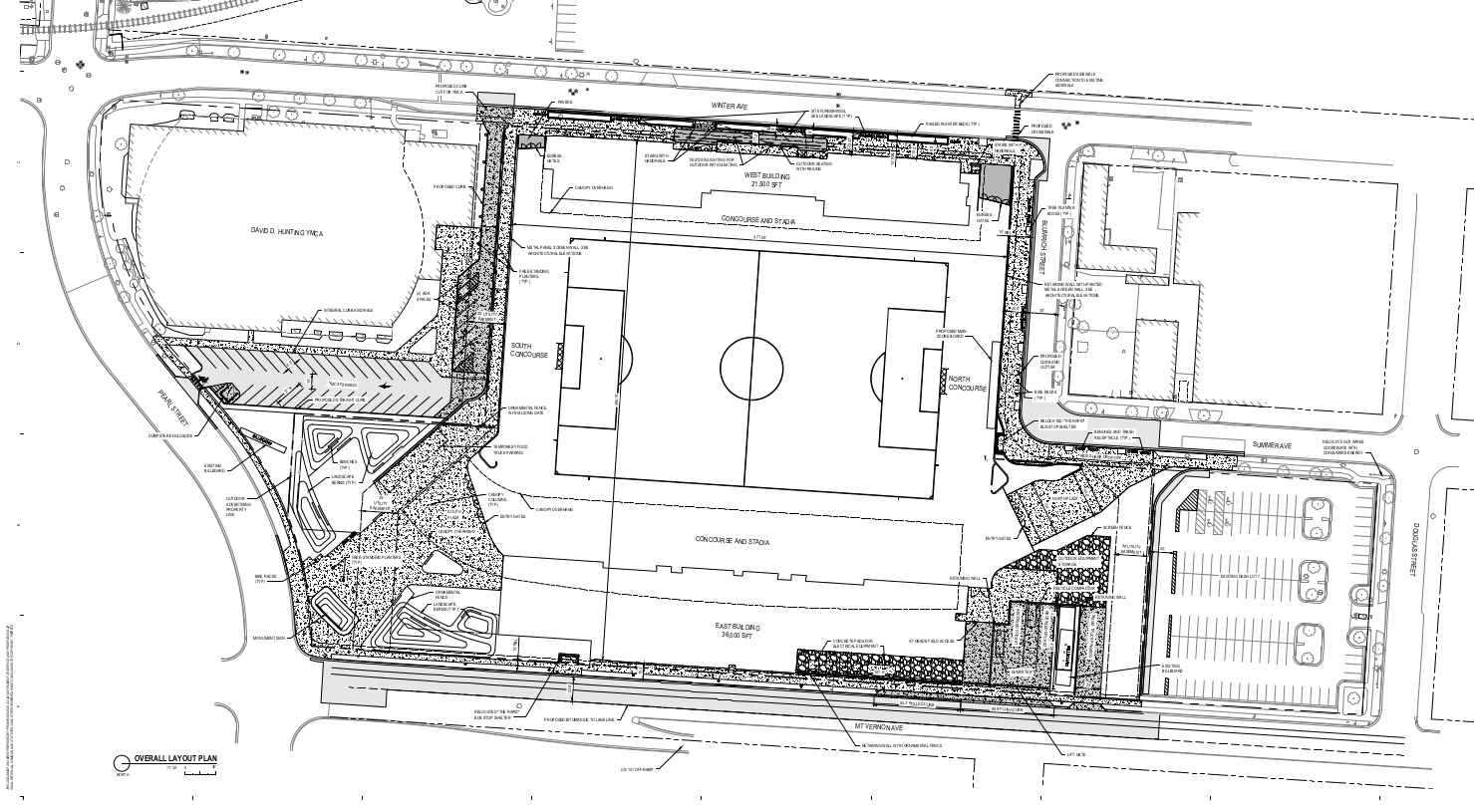 |
The stadium requires Special Land Use for a variety of reasons: outdoor electronic signage, alcohol sales, mobile food vending [aka: food trucks], and being an outdoor recreational venue. This is likely an incomplete list. Also a list rendered less interesting as the Grand Action Foundation 2.0, who is the applicant, is almost certain to get everything they wish; which is not to say they should not, but that this plan has no doubt been back-room reviewed seven days since Sunday. There is likely no cabal more connected to the internals of the city than Grand Action / The Right Place.
Some data-points on the stadium:
- 160,748sq/ft of buildings, including the concourse and all floors. The stadium is two buildings, east and west, connected by a concourse.
- Seating: ~8,500
- Field is oriented north-south, with the scoreboard at the north end. The score board is 106ft x 30ft, having an overall height of 50ft. The sign will operate prior to events and for roughly and hour after events. The brightness of the display can be adjusted for time of day and weather conditions
- MDOT is still ruminating on the impact this may have on US-131; like, will it make it even worse? 🙄
- The maximum height of the canopy is 84ft, 7in. The "2b" Downtown Height Overlay District (DH-2b) allows for structures up to ten (10) stories.
- Four entrances; the primary at Lake Michigan / Pearl and Mount Vernon, the secondary at Blumrich and Summer. A third egress point is located at the northwest corner of the stadium.
- The club house will be located along Winter Ave; the west side of the stadium.
- When there is not a ticket event at the stadium the club house is anticipated to operate as a restaurant/bar seven days a week. Hours of normal operation are anticipated to he from 11:00am until 10:00pm on weekdays, and until 11:00pm on weekends (Friday - Saturday).
- The west side of the stadium, with a height of approximately five (5) stories, will house the suites, press box, team store, concessions and concessions, as well as the clubhouse.
- The transparency of the facade will ~54%, the west wall will be 23ft 4in from the curb of Winter Ave, with the sidewalk expanded to a width of eleven (11) feet. While there are no bike facilities provided in the right-of-way bike racks are proposed for the west side of the facility.
- Logistical access will be located primarily along the north and east sides, back-of-office entrances facing MDOT's pollution generating car sewer [aka: US-131].
- The stadium is 1ft 3in further from the curb of Mt. Vernon than is permitted by code [14ft is required]; however, this excess space is intended to be used for a FUTURE (?) bike lane. 🚴 Bike lanes, it appears, should always be located out of the way and as near as possible to sources of particulate air-pollution such as car sewers. 😷 The greater weight of electric vehicles will, in the future, only exacerbate the health effects of this infrastructure - a fact the leaders of neither of our political parties is willing to mention. 🙈🙉
- The east side of the stadium, which will form a canyon between the stadium and the car-sewer - and possibly in the future have a bike lane - will be one great slab of a wall, comprised mostly of metal panels, with only 14% transparency [aka: doors & windows]. In terms of "neighborhood character" this may just be ugly enough to correspond to the blight and filth which is US-131.
- The stadium will be owned and operated by the Convention/Arena Authority (the CAA) which currently owns and operates the convention center and Van Andel arena.
- Approximately 15 - 20 games per year are anticipated during the annual soccer season from April through September.
- The site, located in the Traditional City Center (TN-CC) zone, is unburdened by parking requirements. 👍
Transportation Integration
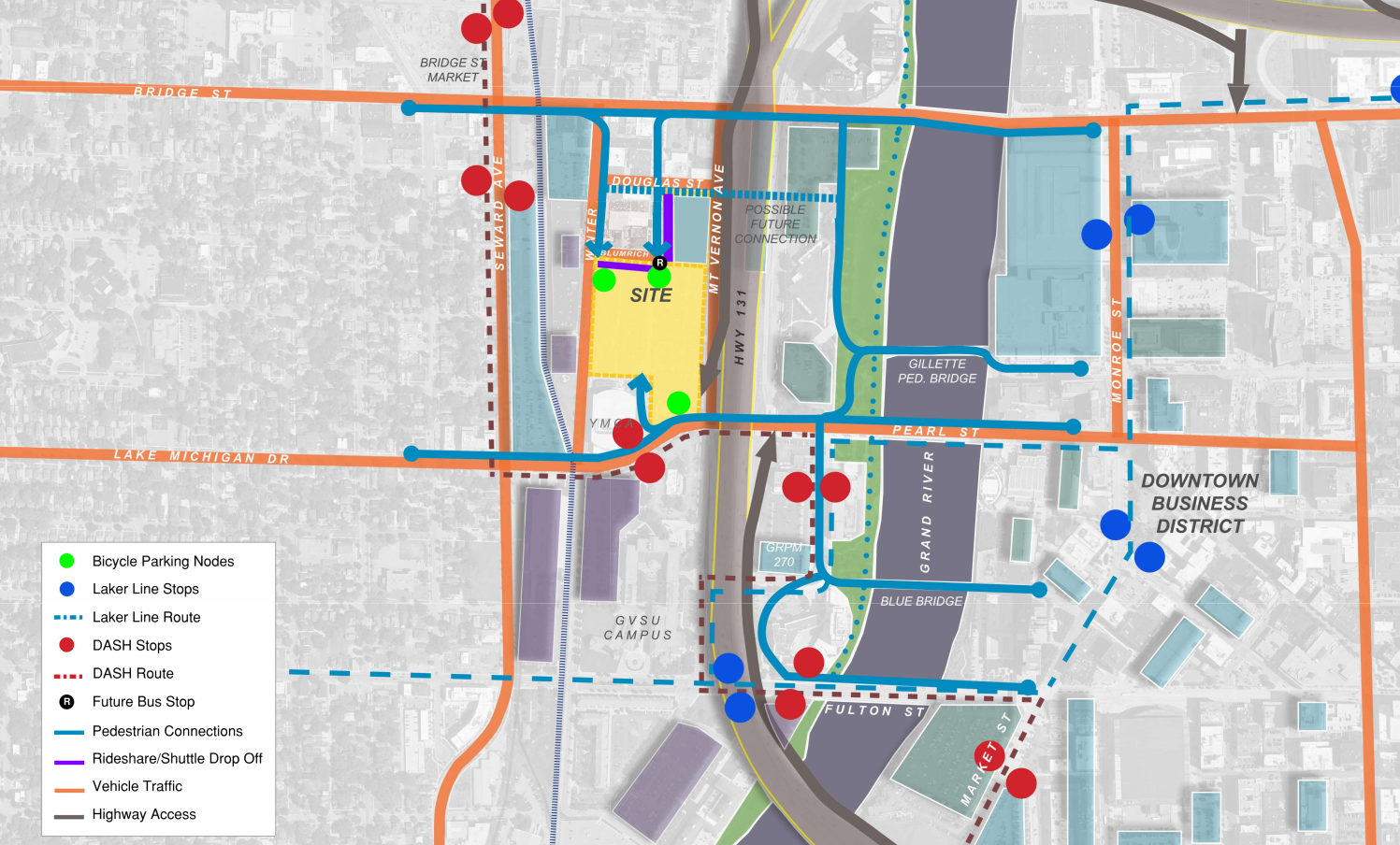
The project has repeatedly stated it has worked with all the related parties (DGRI, the Rapid, Mobile GR, and, of course, MDOT🙄) to develop a multi-modal approach to accessing the stadium. . . . I find it hard to see much evidence of that other than the absence of parking. There is no perceptible emphasis on facilitating bicycle access. There are no apparent plans for upgraded facilities for DASH users; the DASH must surely be anticipated to be the primary transit access to the stadium?
The Rapid #7, which services Mt. Vernon immediately adjacent to the station, is never mentioned. Neither is the Rapid #9 which serves Bridge St.
Fortunately the walk-ability of the stadium, from the north, west, and south is quite good. 👍 From the east, it is not so good. Pedestrian usage of Michigan/Bridge from the east is . . . meh. Pearl street bridge is lousy. And there is MDOT's loud and filthy car-sewer, which vomits high speed traffic directly onto Scriber Ave from the south; Pearl and Scribner is a bad intersection, pedestrians die at this intersection. Given the involvement of MDOT - who would rather slaughter a dozen urbanites than inconvenience even for a moment a single suburban commuter - it is hard to imagine how this gets better.
There are 16,000 parking spaces within a 15-minute walk to or from the stadium. This is ample parking to facilitate full simultaneous events at the stadium, the convention center, the arena, and the amphitheater. Local business with surplus parking [which is almost all them] are having a new revenue source laid before them on the proverbial silver platter. Every business on the West Side should be sending thank you cards to the City Manger.
There are a few mentions in the documents about "coordinating" access to the DASH for stadium employees from "outlying DASH parking lots". I do not know what parking lots on the DASH, following this development and the development of the amphitheater, are considered "outlying". Aside from Leonard St, with these developments, the current DASH route has been entirely enveloped by major amenities and venues.
A forty two (42) space parking lot is planned each of the YMCA building to accommodate accessible parking as well as pick-up and drop-off. The YMCA is expected to have a parking agreement with Grand Valley State University to share usage of their (GVSU's) adjacent parking ramp which is largely unused.
Sound
Much like with the amphitheater project the greatest source of sound pollution and vibration are MDOT's car sewers: US-131 and I-196. MDOT is unaccountable, Gov. Whitmer won't challenge them, the state legislature is useless, and our municipal leaders seem strangely confused and uninformed when the topic of conversation turns to MDOT's filthy infrastructure. One would expect, given all the data, that the "equity lens" would clarify this topic; but, nope.
US-131 is louder, every day of the week, than the stadium will ever be during the largest events.
¯\_(ツ)_/¯
Overall
We are blessed with a relentlessly competent Convention/Arena Authority (the CAA); they know what they are doing. Given the piles of both private and state dollars invested in the project the recovery of the local public sector's relatively small investment is as assured as anything can be; failure would have to involve an economic catastrophe of such severity as to render all this irrelevant to the work-a-day citizen.
There is the promise, as with the amphitheater, that this will induce greater development. Especially housing. We will wait and see. This-or-that inducing greater development is something I've heard too often to give it any weight. I hope so.
Is this project "transformational"? That is the hip term currently. No, it is not. But, it is good. A stadium is an asset desired by the community, and this design and site are possibly the best stadium we can realistically expect given all the constraints. Constraints which include the cultural myopia of some of our civic leaders and institutions.
The most interesting aspect of the project, IMNSHO, is that related to state house bill 5048 which will allow the city to pursue a 2% lodging tax and the county an increased hotel excise tax to fund venues and amenities such as the stadium and amphitheater. To levy this tax the city and the county will have to go to the ballot box for voter approval. When this happens, which seems inevitable, I look forward to organizing a "No!" vote unless equivalent investments are made in truly transformational changes regarding housing and transportation.

